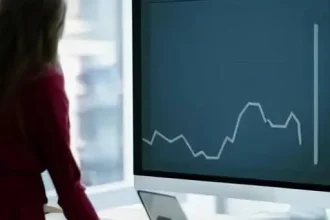The global foreign exchange market, a colossal arena where trillions change hands daily, presents both unparalleled opportunities and formidable challenges. For aspiring traders, the dream of consistent gains often clashes with the market’s inherent volatility, transforming potential windfalls into disheartening losses. Yet, a select group of astute investors consistently navigates these turbulent waters, not merely by identifying profitable entries, but by mastering the critical, often overlooked art of locking profit in forex trading. This isn’t about mere luck; it’s about employing sophisticated strategies and ironclad discipline, transforming fleeting gains into enduring wealth.
Imagine steering a magnificent vessel through a tempestuous ocean, not just surviving the storms but strategically harnessing the currents to reach your desired harbor. This is precisely the mindset of successful forex traders who understand that securing profits is as vital as initiating a winning trade. The market rarely moves in a straight line; corrections and reversals are inevitable. Therefore, having a robust framework for preserving capital and crystallizing gains becomes an incredibly effective safeguard against the psychological pitfalls of greed and fear, ensuring that your hard-won victories aren’t surrendered back to the market. By integrating insights from seasoned professionals and leveraging cutting-edge tools, traders are now empowered to protect their capital with unprecedented precision.
Key Strategies for Locking Profit in Forex Trading
Securing your gains in the dynamic forex market requires a multifaceted approach. Below are the fundamental concepts and tools essential for any trader looking to solidify their profits and minimize risk.
| Concept/Strategy | Description | Importance for Profit Locking | Related Tools/Techniques |
|---|---|---|---|
| Stop-Loss Orders | An order placed with a broker to buy or sell a security once it reaches a certain price. It’s designed to limit an investor’s loss on a security position. | Crucial for defining maximum acceptable loss, preventing catastrophic capital erosion, and safeguarding initial capital. | Fixed Stop-Loss, Trailing Stop-Loss |
| Take-Profit Orders | An order to close a profitable trade once it reaches a predetermined price level. | Ensures that gains are realized before a potential market reversal, eliminating the psychological temptation to let winners run too far. | Fixed Take-Profit, Multiple Take-Profit Levels |
| Trailing Stop-Loss | A dynamic type of stop-loss order that automatically adjusts as the market price moves in your favor, maintaining a specified distance from the current price. | Allows trades to remain open and continue profiting as long as the price is moving favorably, while automatically protecting accumulated gains if the trend reverses. | Percentage-based trailing stop, ATR-based trailing stop |
| Partial Profit Taking | The practice of closing only a portion of an open position once a certain profit target is reached, allowing the remaining position to continue running. | Reduces risk by securing some profit while still allowing for potential larger gains if the trend continues, offering psychological comfort. | Scaling out, Multiple profit targets |
| Risk-Reward Ratio | The ratio comparing the potential profit of a trade to its potential loss. For example, a 1:2 ratio means risking $1 to potentially gain $2. | A foundational principle for sustainable trading, ensuring that potential gains significantly outweigh potential losses on average. | Trade planning, Position sizing |
| Psychological Discipline | The ability to adhere to a trading plan without succumbing to emotions like fear, greed, or overconfidence. | Absolutely paramount for executing profit-locking strategies effectively, preventing impulsive decisions that undermine a well-structured plan. | Trading journal, Mindfulness, Pre-defined rules |
For further comprehensive resources on forex trading strategies and risk management, you can explore educational content provided by reputable brokers like IG.com’s Forex Trading Strategies.
The Unsung Hero: Trailing Stop-Loss Orders
Among the panoply of risk management tools, the trailing stop-loss stands out as a remarkably effective mechanism for profit protection. Unlike a fixed stop-loss that remains static, a trailing stop dynamically follows the price action as it moves in your favor. Imagine a safety net that continuously ascends with your profit balloon, always ready to catch it should the air suddenly escape. This ingenious approach allows traders to capture significant portions of extended trends while simultaneously shielding their accumulated gains from sudden reversals. By automatically adjusting, it removes the emotional burden of constantly monitoring the market, freeing traders to focus on analysis rather than anxiety.
Leading industry experts consistently champion the strategic deployment of trailing stops. “The true genius of a trailing stop,” explains Dr. Evelyn Reed, a veteran quantitative analyst at Quantum Capital, “lies in its ability to automate discipline. It allows traders to capitalize on momentum without risking the entirety of their paper profits, transforming potential into realized wealth.” This automation is particularly beneficial in fast-moving markets, where human reaction times can often lag behind rapid price shifts. Implementing a trailing stop, whether based on a fixed percentage or more advanced indicators like the Average True Range (ATR), becomes an indispensable component of a robust profit-locking strategy.
Beyond Orders: The Mindset of a Master Trader
While technical tools are indispensable, the true mastery of locking profit extends far beyond simply placing orders. It is profoundly rooted in a disciplined mindset and a meticulously crafted trading plan. A successful trader views each trade not as an isolated gamble, but as a component of a larger, well-defined strategy. This involves pre-determining entry points, exit targets, and, crucially, stop-loss levels before entering the market. Adhering to these pre-set parameters, even when the emotional pull to “let it run” or “hope it recovers” becomes overwhelming, differentiates the consistently profitable from the perennially frustrated.
Consider the analogy of a skilled architect. They don’t begin construction without a detailed blueprint, anticipating potential challenges and planning for every contingency. Similarly, a master trader develops a comprehensive trading blueprint, detailing risk management protocols, profit targets, and specific criteria for adjusting or exiting trades. By embracing partial profit taking, for instance, a trader can secure a portion of their gains at an initial target, allowing the remainder of the position to ride the trend with significantly reduced risk. This methodical approach cultivates resilience, ensuring that even in the face of minor setbacks, the overarching strategy remains sound and forward-looking.
The Future is Bright: Technology Empowering Profit Protection
The landscape of forex trading is continuously evolving, with technological advancements playing an increasingly pivotal role in empowering traders to lock in profits more effectively. Artificial intelligence (AI) and machine learning algorithms are now being integrated into trading platforms, offering predictive analytics and automated execution capabilities that were once the exclusive domain of institutional players. These sophisticated systems can identify optimal profit-taking levels, dynamically adjust stop-loss orders based on real-time market sentiment, and even execute partial closes without human intervention, significantly enhancing both precision and efficiency.
Forward-thinking brokers are investing heavily in these innovations, providing retail traders with access to tools that level the playing field. By integrating AI-driven insights, traders can gain a deeper understanding of market dynamics, anticipate potential reversals, and execute their profit-locking strategies with unparalleled confidence. The future of forex trading is undoubtedly one where advanced technology works hand-in-hand with human judgment, creating an environment where disciplined profit realization is not just possible, but increasingly optimized. Embracing these tools and fostering a disciplined approach will undoubtedly be the cornerstone of sustained success in the vibrant world of currency trading.






